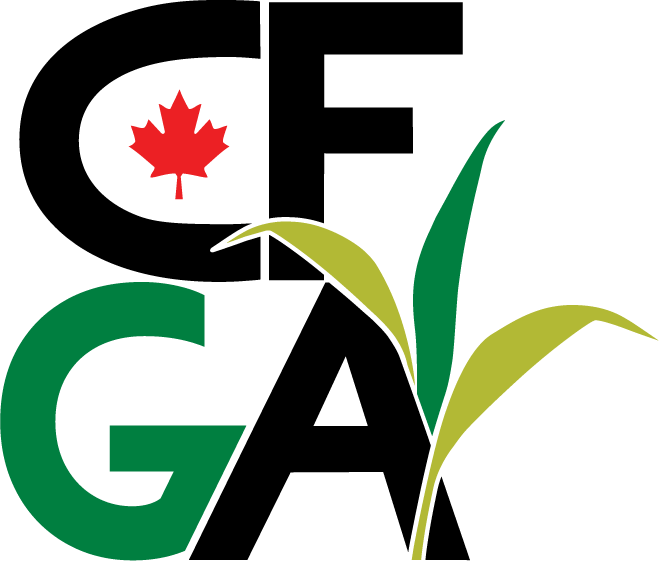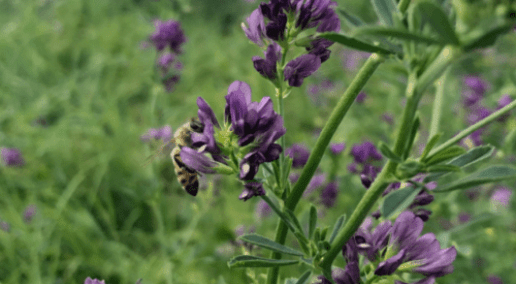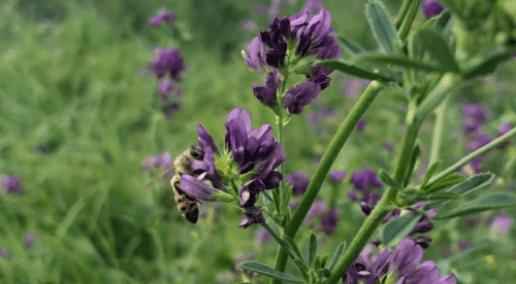The morning session of the Canadian Forage and Grassland Association’s (CFGA) 14th annual conference in Harrison Hot Springs, B.C. on Nov. 29 included a live panel discussion with Dan Undersander (University of Wisconsin) and Bart Lardner (University of Saskatchewan). The panel took questions from the audience, all of which related to legumes, soil nitrogen (N), climate change and on-going research.
Question 1: Dr Dan Undersander mentioned legume termination using plow down, but what if it was terminated using a no-till method with glyphosate, how would N availability differ?
Dan: No-till termination should be used, rather than plowing. The data shows no real difference between N availability whether using no-till or conventional. There is a little bit slower release depending on the speed which the plants die, the N comes from the finer root hairs, which degrade very quickly after plant death.
Question 2: We have an alfalfa stand that we terminate in August and seed with timothy in the fall. We do soil tests in November, but don’t see high available N then; it’s only slightly elevated. In the spring we fertilize at half the rate we normally would, since following an N cover crop. Then we see huge crops develop. Why isn’t the N showing up in the fall soil sample, but clearly is available as indicated by the spring growth?
Dan: For N, the breakdown occurs over a long period of time. The N is released gradually over a year and a half after it’s killed. We suggest there is a 50-pound legume credit the second year after you’ve terminated alfalfa.
Question 3: I’m thinking about stand composition. We’re more familiar with N credits for full cover of clover or alfalfa, but studies are showing stand mixtures can bring a N synergy. Can you qualify this? How much legume do I need in a mixed stand to be impactful, to get enough N? How much N is the legume species sharing with the grass species?
Bart: Thirty to 40 per cent of mixed stand should be legume. N sharing has a lot to do with soil structure.
Dan: It can vary more than this and I don’t think we can give a number because it depends how well the forage is growing and how much N it is fixing. I usually suggest 40 per cent legume in stand should be enough to give N for the companion grasses - assuming these are healthy plants, without disease.
Question 4: There is a gulf between research plots and real paddocks. How do you extrapolate the information from the research site under the conditions of that year to other locations and contexts?
Answer: We need to work with more producers directly. Through the Living Labs we’re able to work with producers as cooperators across the western provinces, at many different sites. We’re testing several Best Management Practices (BMPs) that we can integrate onto their farms and ranches, such as cover cropping and grazing management. If we can take this data to know what happens in each different soil zone, it can make it more possible to extrapolate what is happening on research sites to other places.
The panel was also asked about measuring greenhouse gas emissions at the individual animal and farm level and the stage of current research to measure this. A final question was about forage seed breeding, the seed import market and what seed characteristics meet Canada’s needs.
Conference recordings
If you’d like to watch the full recording of this panel, or any other 2023 Conference sessions, please email [email protected] for information on how to purchase access. Note, if you attended the 2023 conference, the recordings are available for free to those who registered for the conference.
To read more about each speaker, check out the CFGA 2023 Conference agenda.
Back to Conference 2023



Leave a Comment